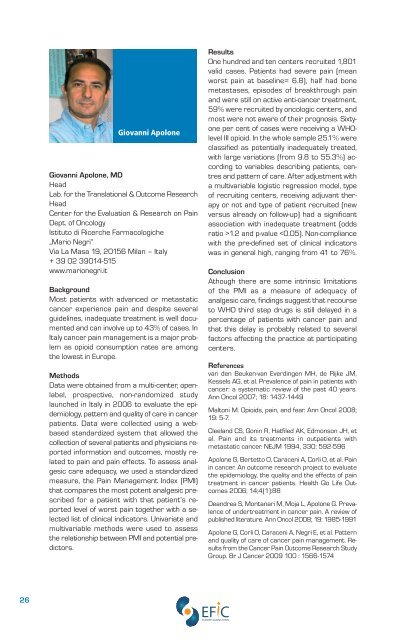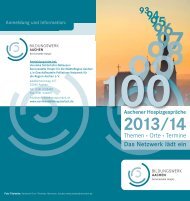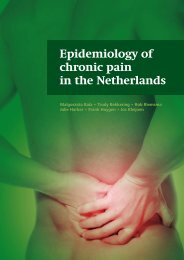First EFIC® Symposium Societal Impact of Pain - SIP
First EFIC® Symposium Societal Impact of Pain - SIP
First EFIC® Symposium Societal Impact of Pain - SIP
You also want an ePaper? Increase the reach of your titles
YUMPU automatically turns print PDFs into web optimized ePapers that Google loves.
26<br />
Giovanni Apolone<br />
Giovanni Apolone, MD<br />
Head<br />
Lab. for the Translational & Outcome Research<br />
Head<br />
Center for the Evaluation & Research on <strong>Pain</strong><br />
Dept. <strong>of</strong> Oncology<br />
Istituto di Ricerche Farmacologiche<br />
„Mario Negri“<br />
Via La Masa 19, 20156 Milan – Italy<br />
+ 39 02 39014-515<br />
www.marionegri.it<br />
Background<br />
Most patients with advanced or metastatic<br />
cancer experience pain and despite several<br />
guidelines, inadequate treatment is well documented<br />
and can involve up to 43% <strong>of</strong> cases. In<br />
Italy cancer pain management is a major problem<br />
as opioid consumption rates are among<br />
the lowest in Europe.<br />
Methods<br />
Data were obtained from a multi-center, openlabel,<br />
prospective, non-randomized study<br />
launched in Italy in 2006 to evaluate the epidemiology,<br />
pattern and quality <strong>of</strong> care in cancer<br />
patients. Data were collected using a webbased<br />
standardized system that allowed the<br />
collection <strong>of</strong> several patients and physicians reported<br />
information and outcomes, mostly related<br />
to pain and pain effects. To assess analgesic<br />
care adequacy, we used a standardized<br />
measure, the <strong>Pain</strong> Management Index (PMI)<br />
that compares the most potent analgesic prescribed<br />
for a patient with that patient’s reported<br />
level <strong>of</strong> worst pain together with a selected<br />
list <strong>of</strong> clinical indicators. Univariate and<br />
multivariable methods were used to assess<br />
the relationship between PMI and potential predictors.<br />
Results<br />
One hundred and ten centers recruited 1,801<br />
valid cases. Patients had severe pain (mean<br />
worst pain at baseline= 6.8), half had bone<br />
metastases, episodes <strong>of</strong> breakthrough pain<br />
and were still on active anti-cancer treatment,<br />
59% were recruited by oncologic centers, and<br />
most were not aware <strong>of</strong> their prognosis. Sixtyone<br />
per cent <strong>of</strong> cases were receiving a WHOlevel<br />
III opioid. In the whole sample 25.1% were<br />
classified as potentially inadequately treated,<br />
with large variations (from 9.8 to 55.3%) according<br />
to variables describing patients, centres<br />
and pattern <strong>of</strong> care. After adjustment with<br />
a multivariable logistic regression model, type<br />
<strong>of</strong> recruiting centers, receiving adjuvant therapy<br />
or not and type <strong>of</strong> patient recruited (new<br />
versus already on follow-up) had a significant<br />
association with inadequate treatment (odds<br />
ratio >1.2 and p-value






